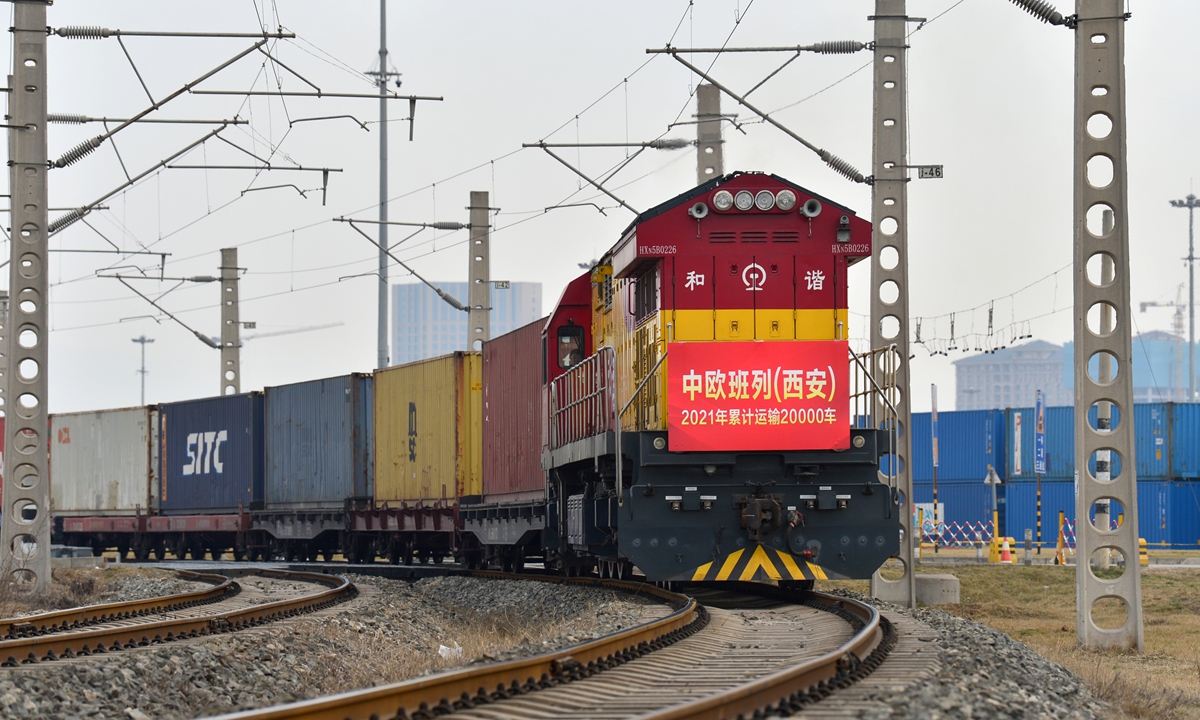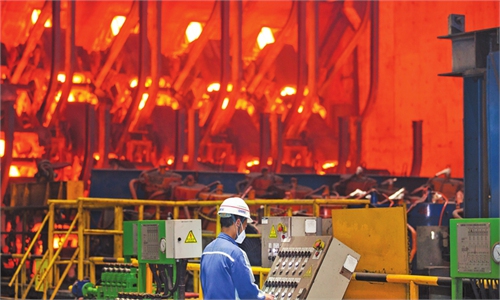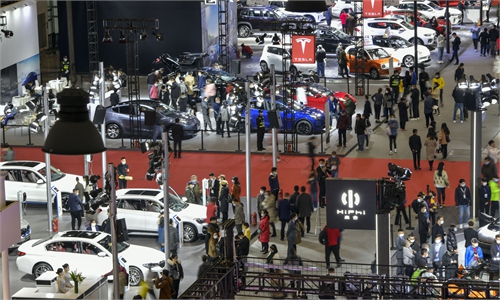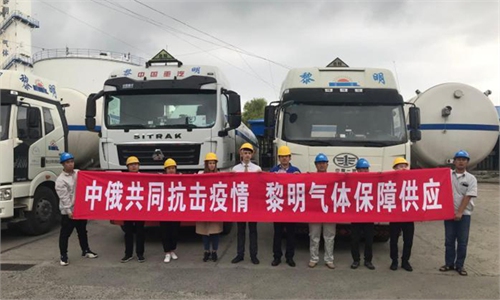
China-EU freight train, carrying juice, plastic products and daily necessities, pulls out of the station at Xi'an, Northwest China's Shaanxi Province, heading to Khorgas in Northwest China's Xinjiang Uygur Autonomous Region on February 22. Photo: cnsphoto
Commercial vehicle exports through a major land port in Northwest China's Xinjiang Uyghur Autonomous Region soared in the first seven months of the year as China's automobiles took a larger share in Central Asia and European market, according to local customs.
According to Khorgos customs, 11,659 commercial vehicles were exported through the border port from January to July, a year-on-year increase of 219 percent, with a single-day high of 150 commercial vehicles.
Yang Jiajian, an employee with Khorgos Haitian International Logistics, said that the company has exported 110 commercial vehicles as of August, mainly to Kazakhstan and Russia, double the total number in 2020.
"Chinese passenger car and construction machinery companies are actively expanding in Central Asia, where they have a price advantage," Yang told the Global Times on Monday.
For example, an exported Chinese earthmoving vehicle is $70,000 after customs clearance, while the same vehicle of a foreign brand can sell for $100,000 in the local market, he said.
In order to help domestic enterprises actively expand in the international market, Khorgos customs launched the "boundary handover" customs clearance system, with strict COVID-19 prevention and control measures to achieve "contactless handover".
"The Chinese driver will pull the exported commercial vehicles to a designated area, and foreign drivers will come and pick up the vehicles," Yang said.
However, due to the impact of the epidemic, freight movements are being held up due to strict inspection and quarantine requirements in Xinjiang region, he said.
"In the past, it took two to three days for goods to leave the port, but now it takes seven to 15 days, and the queue lasts for over 30 kilometers," he said.
According to Urumqi customs, in the first seven months, the total value of Xinjiang's foreign trade reached 83.67 billion yuan ($12.9 billion), up 14 percent year-on-year and 9.8 percent higher than 2019.
From January to July, foreign trade from Xinjiang region to Kazakhstan, Kyrgyzstan and Tajikistan increased by 13.2 percent, 98.2 percent and 27.8 percent, respectively, compared with the same period last year.
Exports and imports from countries and regions along the Belt and Road Initiative increased by 19.6 percent year-on-year.



